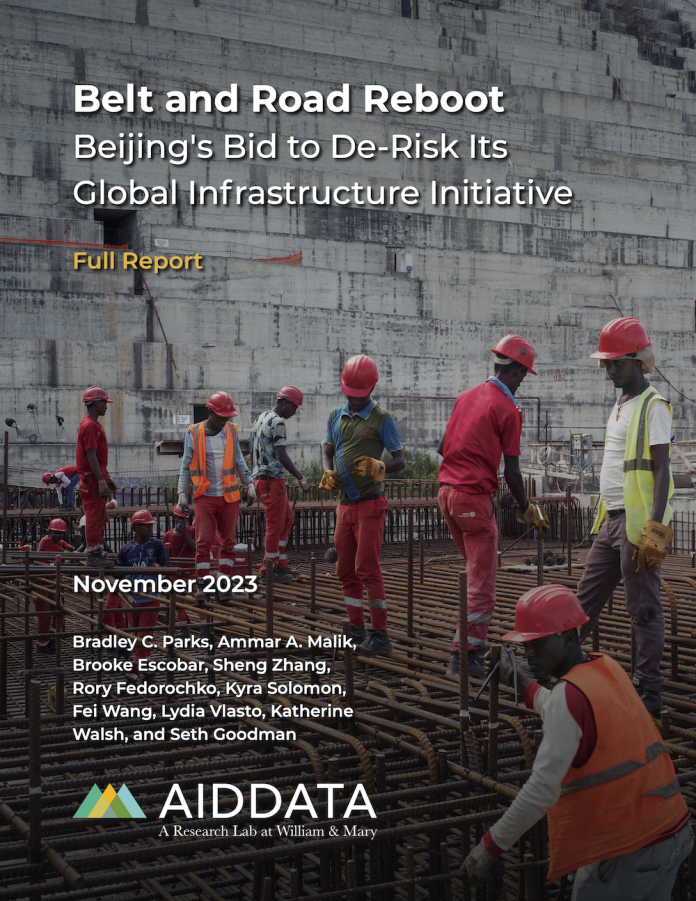Monday, Nov. 6, the AidData research lab at the College of William and Mary released a comprehensive report titled “Belt and Road Reboot: Beijing’s Bid to De-Risk its Global Infrastructure Initiative.” The report finds that China has made efforts to respond to managing repayment risk, environmental, social and governance risk (ESG) and reputational risk as it manages over $1.1 trillion in outstanding debt.
“Beijing is not going to stand by and watch its flagship global infrastructure initiative crash and burn,” research professor at the College’s Global Research Institute and Executive Director of AidData Brad Parks said in an interview with AidData’s Director of Partnerships and Communications Alex Wooley. “It is finding its footing as an international crisis manager and refocusing its time and money on troubled projects, distressed borrowers and sources of public backlash in the Global South.”
Global news outlets, including the New York Times, Reuters and DW covered the report.
The study bases its findings on the 3.0 version of AidData’s Global Chinese Development Finance (GCDF) dataset, which was released on the same day as the “Belt and Road Reboot” report. The dataset provides information on over 20,000 projects from 2000-2021, spanning 165 low- and middle-income countries supported by financial loans and grants from China’s official sector institutions.
A team of 10 AidData researchers wrote the report, including Parks.
“Contrary to the conventional wisdom, we do not find that Beijing’s annual lending and grant-giving to the developing world has plummeted to nearly zero,” the report’s abstract reads. “It remains the world’s single largest official source of international development finance. Our analysis also reveals new insights about Beijing’s ongoing bid to de-risk the Belt and Road Initiative (BRI)– and outflank its competitors.”
The report identifies China’s short- and long-term measures to reduce the frequency of debt in developing areas, specifically through emergency rescue lending, paying off borrowers’ failed repayments through accessing collateral accounts and having borrowers put money back into these accounts to ease their repayment terms.
According to AidData’s latest report, it is necessary for members of the Group of Seven (G7) – an organization of leaders from countries with economic strongholds such as Canada, France, Germany, Italy, Japan, the United Kingdom and the United States – to reassess their perceptions of Beijing’s role in the global infrastructure market.
“Beijing is several steps ahead of its competitors in the global infrastructure market,” Parks said in an interview with Wooley. “It is focused on giving leaders in the developing world exactly what they want: rapid delivery of large-scale infrastructure projects without unreasonably high levels of ESG risk. If Washington and its allies cannot compete on this basis, they will face a crisis of relevance. They are focused on competing with a version of the BRI that no longer exists– BRI 1.0 rather than BRI 2.0.”
To counter losses in measures of soft power, including public opinion, support from political leaders and positive media coverage, Chinese authorities have shifted the allocation of aid and credit during the second reboot of the BRI, which the report names BRI 2.0. Accompanying these shifts, 55% of China’s loans have reached their repayment periods for low-and middle-income countries, a percentage AidData estimates to rise to 75% by 2030.
“Beijing is navigating an unfamiliar and uncomfortable role – as the world’s largest official debt collector – at a time when many of its biggest borrowers are illiquid or insolvent,” AidData Senior Research Scientist Ammar A. Malik said in an interview with Wooley. “And debt collectors don’t win a lot of popularity contests.”

